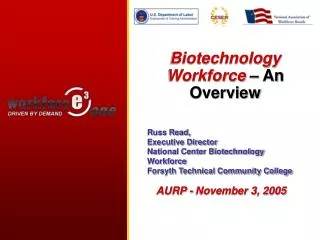The Economic Engine of Biomanufacturing
Biomanufacturing is a significant and growing economic force capable of revitalizing local economies[9]. The U.S. bioeconomy's total economic impact was estimated at $959 billion in 2016, with the industrial bioeconomy alone contributing $210 billion to the U.S. gross national product and supporting nearly 644,000 jobs in a single year[1][5]. This sector is poised for enormous growth, driven by a shift to biologically based processes and novel bioproducts[1]. A key advantage for domestic economies is the industry's significant "multiplier effect," which generates outsized secondary economic benefits through a robust U.S. supply chain[5]. Reports indicate that each direct job in the industrial bioeconomy supports an additional 11.08 indirect and induced jobs[5]. Another estimate suggests the economic multiplier for biobased products is 2.8, meaning every job created supports an additional 1.8 jobs[9]. Federal investments can catalyze this growth; for example, a $51 million investment in a regional Tech Hub is projected to generate 1,000-2,000 jobs and $1-2 billion in direct economic benefits over a decade[6]. Extrapolating from this, a sustained federal investment of $5-10 billion over five years could create 100,000-200,000 new jobs and hundreds of billions of dollars in annual economic impact[6].
Retooling the Workforce for a Bio-Based Future
A critical challenge to growing the bioeconomy is that the U.S. biomanufacturing workforce has not kept pace with the development of new bioproducts[1]. However, this gap presents an opportunity to retrain workers from declining industries for new, stable careers[2]. External training programs can help workers displaced from other sectors adapt their skills for a biomanufacturing setting[2]. A successful example occurred in Massachusetts in 2015, when a semiconductor facility prepared to shut down, slating nearly 700 people to lose their jobs[2]. The state's Department of Labor and Workforce Development partnered with Worcester Polytechnic Institute to develop a program to retrain these workers for the biomanufacturing industry[2]. A common misconception is that all biomanufacturing jobs require advanced degrees, but many companies have been mistaken to require bachelor's degrees for entry-level positions[3]. In reality, much of the work demands reliable people who are adept at hands-on tasks and can follow standard operating procedures, skills that do not necessitate a four-year degree[3]. Community colleges are crucial in this transition, offering certificate and two-year degree programs that can help adult learners with no prior experience enter the field[3]. Biomanufacturing hubs should therefore engage with community colleges and technical schools to develop training curricula and apprenticeship programs, creating pathways to good-paying jobs for individuals with high school or associate's degrees[1].
From Smokestacks to Bioreactors: Reusing Industrial Infrastructure

Biomanufacturing offers a unique opportunity to repurpose the infrastructure of legacy industries, particularly in regions historically dependent on fossil fuels or traditional manufacturing[1]. States whose economies were formerly dependent on oil and coal production can be bolstered by retooling and reskilling their existing facilities and workforce, leveraging a preexisting expertise in manufacturing to support new capabilities[1]. A prime example of this is BHE Renewables' $500 million investment to retrofit an abandoned aluminum manufacturing plant in West Virginia into a new biomanufacturing site that runs on 100% renewable energy[1]. This approach aligns with policy recommendations that encourage considering how existing infrastructure can be utilized to process and transport feedstock and products, which can reduce costs and environmental impact[6]. By transforming old factories into modern synthetic biology plants, post-industrial cities can turn economic liabilities into assets, creating a sustainable commercial biomanufacturing ecosystem on the footprint of the old one[1][6].
Case Studies in Urban and Regional Revitalization
Several U.S. regions are already demonstrating how focused investment in biomanufacturing can spur economic revitalization. In states like West Virginia and Ohio, biomanufacturing is seen as a way to support economies formerly dependent on coal by retooling existing facilities and leveraging manufacturing expertise[1]. The Appalachian Climate Technologies Initiative, along with a $500 million private investment to retrofit an abandoned aluminum plant, exemplifies this trend[1]. In St. Louis, Missouri, state government, academia, and private industry have collaborated to create the St. Louis Tech Triangle, which integrates biosciences with advanced manufacturing and was awarded $25 million from the Department of Commerce to accelerate innovation[1]. Similarly, the Economic Development Administration’s Tech Hubs program awarded $51 million each to Heartland BioWorks in Indiana and the iFAB Tech Hub in Illinois to expand biomanufacturing scale-up infrastructure[6]. These hubs are projected to create thousands of jobs and generate billions in economic activity[6]. New York City is also positioning itself as a leader with LifeSci NYC, a $1 billion initiative to fund lab space, workforce development, and new research[1].
Policy Pathways to a Thriving Bioeconomy
Strategic government policies are essential to fostering a vibrant domestic biomanufacturing ecosystem. A central recommendation is the establishment of biomanufacturing infrastructure hubs through public-private partnerships, catalyzed by federal investment on the order of $50 million per hub[1]. These hubs would provide shared, scalable facilities to help companies overcome the bottleneck of moving from prototype to market-scale production[1]. Another powerful policy tool is leveraging federal procurement to create market demand[6]. The 'BioPreferred Program,' for instance, uses the government's purchasing power as a strong catalyst for innovation by requiring federal agencies to purchase biobased products[9]. This can be enhanced with state-level tax rebates to encourage corporate procurement of local biobased products[9]. Further recommendations include creating right-sized federal incentives for companies of all sizes and coordinating regional investments through programs like the EDA Tech Hubs and NSF Engines to maximize impact in both urban and rural communities[6]. Ultimately, success depends on a three-way partnership among academia, government, and the bio-based industry to align workforce training, infrastructure development, and market creation[3].
Get more accurate answers with Super Pandi, upload files, personalized discovery feed, save searches and contribute to the PandiPedia.
Let's look at alternatives:
- Modify the query.
- Start a new thread.
- Remove sources (if manually added).





